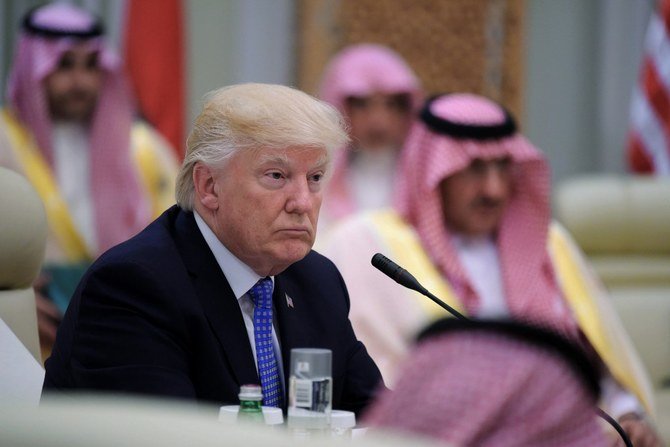
- ARAB NEWS
- 09 Jul 2025

The COVID-19 pandemic has not changed many of the geopolitical challenges for the US in the Middle East. Iran will continue to export its “revolution” through terrorists proxies. Transnational terrorism will continue to plague Syria and Yemen. For better or worse, Russia and China will strive to be more involved in the region.
If anything, new challenges have appeared —the economic fallout from the pandemic and the drop in the price of oil.
What will change, however, is the level of resources the US can devote to these issues. This means Washington needs to be smarter in how it manages its relations in the Middle East. One initiative that deserves further attention is the Middle East Strategic Alliance (MESA) proposed by the Trump administration.
Because the historical and political circumstances that led in 1949 to the creation of NATO are absent in the Middle East, the region lacks a similarly strong collective security organization. The idea of forming one emerged publicly during President Donald Trump’s visit to Saudi Arabia in May 2017 for the Riyadh Summit, his first official trip outside the US. The Gulf states were focused on building close ties with the new administration after strains with its predecessor over the flawed and risky 2015 Iran nuclear deal.
The MESA concept dovetailed with Trump’s push for greater burden-sharing in security. The thinking was that as MESA’s military capacity grew, Washington could promote regional security and stability while freeing US military forces for deployment in other regions. Beyond the security component of MESA, there is also a need for greater economic cooperation between the US and the Gulf, especially when the pandemic recedes.
However, while MESA sounds good in theory, it is more difficult to implement in practice, for three reasons.
First, the dispute between Qatar and some of its neighbors is the main issue preventing the creation of MESA. Until this is resolved, it is unrealistic to think these countries could sit at the same table in a security or economic alliance. US policy makers should redouble their efforts to end this dispute.
The short-term US goal should be to lay strong foundations on which a future alliance can be built. Instead of going for the immediate creation of MESA, Washington should work with partner countries in the Middle East to build confidence and work on a step-by-step basis to lead up to the eventual creation of MESA.
Luke Coffey
Second, there is no clear consensus on what MESA should be. Some Gulf countries want the main focus to be on security, others on trade and economics; they are not mutually exclusive, and a well-rounded MESA should focus on security, economics, trade and energy.
Finally, there is a lack of agreement on the main threats to the region. Bahrain, Saudi Arabia and the UAE take a hawkish view of the threat from Iran. Oman, which prides itself on its regional neutrality, and Qatar, which shares natural gas fields with Iran, maintain cordial relations with Tehran. Kuwait is somewhere in the middle. This complicates the ability to form an alliance such MESA.
Nevertheless, the effort is worthwhile. The short-term US goal should be to lay strong foundations on which a future alliance can be built. Instead of going for the immediate creation of MESA, Washington should work with partner countries in the Middle East to build confidence and work on a step-by-step basis to lead up to the eventual creation of MESA.
This could be done if the US focused less on specific threats and more on improving military capabilities. Many countries see Iran as the biggest threat in the region. The US is also worried about the increasing role of Russia and China. But not every country in the region sees the situation in the same way. Instead of focusing on a specific threat, which will never enjoy a Gulf consensus, the US should identify key military, security and intelligence-gathering capability gaps that all the countries can address together. This would allow MESA to be ready for all security threats to the region without publicly specifying that Iran is the source of many of them.
The US should also keep the right balance among security, economics and energy inside any MESA proposal. MESA should be seen as a stool with three legs (security, economics, and energy). If one leg is longer than the other, the whole stool is unstable. For too long, the US has focused too much on just one of these issues at a time. This is not a healthy or sustainable way to advance its interests in the region.
As a goodwill gesture, and to show that the US is committed to the principles of economic freedom and free trade, the Trump administration should remove unnecessary tariffs it has placed on Gulf partners — for example, on steel and aluminum. Several Gulf states have done much to diversify their economies, and the steel and aluminum sectors have played a key role. Not only are these tariffs bad for the American consumer, they also needlessly complicate America’s relationships with other countries, especially in the Middle-East
The US will need to forge a broad consensus on the mission, division of labor, and long-term goals of the proposed alliance before it can jump-start its formation — but as the world suffers through the coronaviruspandemic, there is no better time for MESA than now.